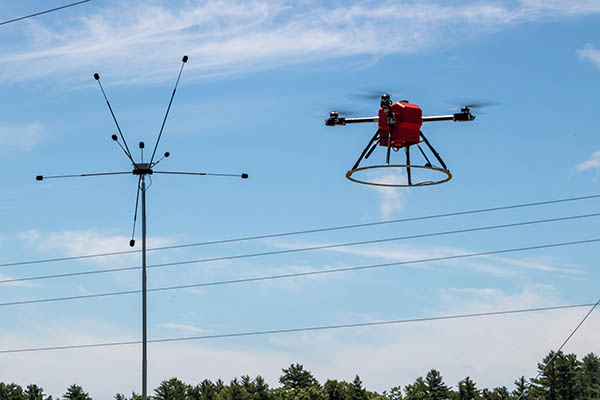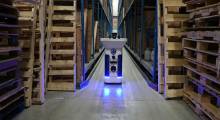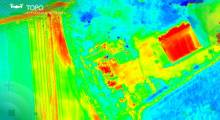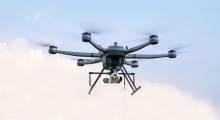American Robotics Inc. and Scientific Applications & Research Associates (SARA Inc.) yesterday said they are partnering to apply SARA's acoustics-based aircraft-detection technology with American Robotics' Scout drones for safe operations in U.S. airspace. The companies said this will “unlock the $100 billion commercial drone market by advancing beyond visual line-of-sight operations in the National Airspace System.”
“The FAA has rigorous requirements for drone companies to prove they can operate safely in the NAS without visual observers or pilots on the ground, and with other manned aircraft,” stated Vijay Somandepalli, co-founder and chief technology officer of American Robotics. “For the drone industry to reach its multi-billion dollar potential and meet the safety regulations set by the FAA, there must be an ecosystem of competent and capable technology partners who work together to make automated commercial drones a reality. The American Robotics and SARA partnership exemplifies the importance of working together to continue to propel the commercial drone industry forward.”
American Robotics was founded in 2016 by roboticists from Carnegie Mellon University and Stanford University. The Marlborough, Mass-based company claimed that it has developed the first fully automated drones to receive approval from the U.S. Federal Aviation Administration (FAA).
American Robotics said platform uses innovations in robot autonomy, machine vision, edge computing, and artificial intelligence to enable enterprise customers to continuously monitor, digitize, and analyze their assets in real time. Last month, the MassRobotics member agreed to merge with Ondas Holdings Inc.
Scout and TASA
Cypress, Calif.-based SARA's Artificial Perception and Threat Awareness (APTA) Division develops sensing and collaboration systems using AI and edge processing for both the military and commercial aerospace markets. They include radio-frequency geolocation systems, acoustic-based threat-detection systems, and other sensors for unmanned aircraft systems (UAS).
The company said it has more than 25 years of experience in developing airborne acoustic sensors needed for beyond visual line-of-sight (BVLOS) flights, addressing business and regulatory hurdles to commercial UAS operations.
SARA said its Terrestrial Acoustic Sensor Array (TASA) can effectively identify other aircraft and maintain a safe distance from them while in flight. It can detect aircraft even when the line of sight is obscured by trees, buildings, darkness, fog, or terrain features, claimed the company.
Combining patented microphone technology and advanced signal-processing algorithms, a single TASA unit can detect aircraft bearing, approximate range, and determine aircraft threat status over a full 360 degree field-of-regard, said SARA.
TASA is tightly integrated with American Robotics' Scout system to ensure information transfer between them occurs reliably and with very low latencies, said the companies. Once a manned aircraft is determined to be a threat by TASA and that information is passed to Scout, the drone would then execute a proprietary avoidance maneuver to steer clear of the threat. This will ensure that both aircraft remain separated in space to assure the safety of both aircraft, said American Robotics and SARA.
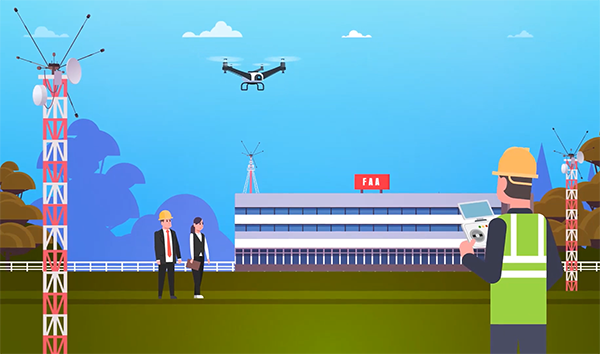
Advancing commercial drone adoption
The companies added that the combination of TASA's sensor technology with Scout's safety features will enable a best-in-class detect-and-avoid (DAA) capability needed to meet and exceed the FAA's expectations for safe drone flight in the National Airspace System (NAS) with no visual observers on the ground.
“This partnership and American Robotics’ recent landmark FAA approvals for BVLOS flight represents a pivotal inflection point in the commercial drone industry, as well as the FAA’s broader acceptance and understanding of autonomous drone technology,” said American Robotics and SARA. “This technology must be viewed from a systems perspective, encompassing a sensor’s ability to detect other aircraft, the drone’s ability to maneuver around the detected aircraft, and safely keep their distance in real-world environments.”
Yesterday, the FAA announced an agreement with Skyward, a Verizon company, to test cellular-connected drones in another initiative to support safe BVLOS operations.
“For drones to successfully collect valuable data, they must be able to function autonomously and operate in a safe and harmonious manner with other manned aviation that operate at low altitudes where drones typically fly,” said Jay Cleckler, chief technologist at SARA. “TASA has been proven capable of reliably detecting manned aircraft that are miles away in various demonstration tests with the FAA and requires little infrastructure or power to operate. American Robotics is a great partner, and their dedication to developing safe and reliable drone technology will truly help to advance the industry and commercial drone applications.”
Article topics
Email Sign Up

